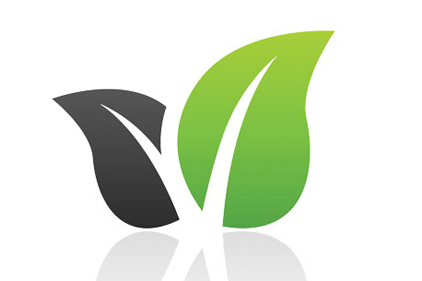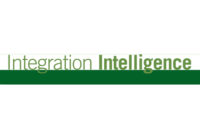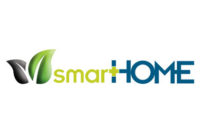There is a natural connection between energy management and access control. A key area of energy management is the connection between energy consumption and occupancy. Access control systems provide the data that building automation systems need to manage energy usage.
“Access control itself, unless you power it with renewable energy like solar panels or wind energy, is not doing much with sustainability. But the richness of the information that an access control system contains can be vital for all the elements of building automation, energy management and conservation. An integrated access control system itself can be the trigger for energy management, providing data that can be used to optimize lighting, HVAC and energy usage,” Vince Lupe, senior channel marketing manager, Honeywell Systems, explains.
Access control can help with space occupancy and variations of occupancy during the day or throughout the day, helping HVAC systems run at the appropriate levels and making sure lights are dimmed or off on unoccupied floors.
“Organizations face intensifying pressure to reduce costs while improving environmental accountability. Corporations can improve their energy management and other ‘green’ initiatives with the proper selection of access control systems, secure printers and managed print services (MPS) programs,” explains John Fenske, vice president, Product Marketing, HID Global,Irvine, Calif.
A carefully selected access control system can provide data — an important piece for fully managing energy.
“The ‘green’ challenge for building management is to know when to expend energy and when to save it, assuming that the building in question isn't already leaking energy through its walls due to the usual construction and aging issues. Access control can provide certain types of occupancy information to assist in this equation,” says Steve Van Till, chief executive officer, Brivo Systems LLC, Bethesda, Md.
Jim Sinopoli, PE, LEED AP, RCDD, managing principal at Smart Buildings, Spicewood, Texas, confirms that point of view. “At this point for commercial LEED-certified buildings, zero-energy buildings or any project where energy savings is important, ‘green’ comes in at the data level with security systems. Where surveillance and access control is coming into play in all this in not in the green building front. Instead, these systems have information on occupancy that can tell you when a room is occupied or something is moving and all that information can be used to better manage energy,” explains Sinopoli. “Basically, you can take that sensing information dealing with whether a building or space is occupied and then align the energy consumption to that occupancy. You can turn off the lights and align heating or cooling in the space — it feeds into the energy-related system,” he describes.
Steve Lewis, C•CURE 9000 product manager for Software House, Tyco Security Products, Westford, Mass., says, “Integrating access control into building management provides many opportunities for customers to use the energy more wisely. It allows them to turn everything on/off more easily and understand when energy is needed. We do it today with cards and time schedules — and we can certainly expand to do that with video. We are certainly seeing this as a growing market.”
Even the details of an access control system matter to a system’s green contributions, down to the very cards and readers selected.
“Cards and readers vary widely in terms of environmental impact and the ability to support such energy programs as Leadership in Energy and Environmental Design (LEED) certification for new building construction. For example, HID’s BioPVC™ cards degrade five times faster than standard plastic cards. Similarly, our latest iCLASS SE® readers incorporate recycled content, which helps organizations earn LEED credits. Additionally, security dealers and integrators can choose readers and secure print solutions that are specifically designed to improve energy efficiency. For instance, the latest readers use power-management technology that reduces energy consumption by up to 75 percent compared to standard operating mode, and ENERGY STAR-rated printers/encoders minimize the amount of energy required to produce professional-quality color ID cards with security encoding,” Fenske points out.
Then there’s the option of eliminating the card altogether, shares Phil Scarfo, vice president, Worldwide Sales and Marketing, Lumidigm, Albuquerque, N.M. “Today, it is possible to replace PVC cards with virtual credentials on a smart phone. These credentials, when linked to one's unique physical identity, provide better access to buildings, data or devices. Virtual credentials are perpetual or even single use, and they can be delivered electronically on the spot. There is nothing to manufacture, nothing to recycle. Virtual credentials represent the ultimate in ‘disposable,’” Scarfo argues.
Cindy English, director of Marketing, Ingersoll Rand Security Technologies, Davidson, N.C. also adds time and attendance, a system often integrated with access control, can be another green option companies can capitalize on.
“One way that many companies are finding it easy to go ‘green’ with their time and attendance system is by using Schlage’s biometric HandPunch terminal – eliminating the use of paper time cards to track employee’s payroll data. According to the Resource Conservation Alliance, it takes approximately two to four pounds of wood to create one pound of paper, plus huge inputs of chemicals, energy and water. Think about how many trees are used to make the timecards. Schlage biometric HandPunch time and attendance terminals help conserve natural resources by using a person’s hand as their timecard. No paper, wood, chemicals, or water are needed to produce paper timecards that are then discarded after one week of use. In fact, with 250,000 HandPunch terminals being used around the world for time and attendance, and the average organization tracking 50 people’s timecards, the HandPunch is eliminating 12.5 million timecards a week, 650 million timecards a year. That’s a lot of trees,” English points out.
Conserving Existing Equipment
Fenske also shares that security professionals can deploy greener projects by specifying flexible access control architecture that support multiple technologies and are compatible with earlier systems to avoid wholesale “rip and replacement” when the need to upgrade arises.
“Reader technology has now been advanced to allow a single reader to support several 125 kHz Prox technologies (FSK, PSK, and ASK) reducing inventory requirements and protecting investments against changing credential environments. The ability to preserve existing equipment is illustrated by HID’s federal compliance program, which enables upgrades to FIPS 201 standards without having to replace current physical access control head-end server, panel or door control hardware. Thanks to the latest advances in access control and secure printing technologies, it is possible to achieve significant savings while dramatically improving green business practices,” Fenske says.
Of course, there’s nothing conserves resources like using less, and today’s wireless access control systems provide an opportunity for companies to use less cable and consume less.
“As more and more products are developed to take access control out to “the edge,” we are finding that in the future it will take less and less cable to connect things together and make them work, which means a significant reduction in the use of a wide variety of raw materials and the energy used to produced the finished cable, etc. We’re proud of the fact that we were one of the first major access control providers to embrace this technology and to take full advantage of the new wireless access control products. Both ASSA ABLOY and IR/Schlage were instrumental in bringing these products to market. I can visualize that someday, we might be able to completely eliminate the need for any wire at all,” says Dave Barnard, director of Dealer Development, RS2 Technologies, LLC, Munster, Ind.
IP also provides other energy saving/green components. Jeff Brown, chief executive officer, Smarter Security, describes some of the green benefits IP brings to IP-enabled turnstiles saying, “IP-enabled turnstiles represent a great stride forward in optimizing sustainable energy practices. End-users will see the following benefits:
1. More efficient maintenance from providers: Service technicians will be able diagnose and fix turnstiles remotely and automatically provide assurance to customers, reducing the amount of time that product technicians and end-user representatives are required to be on-site.
2. Increased awareness of energy consumption: An IP-enabled system that is visible on the network allows end-users to see and better understand how their access control system’s energy consumption impacts the company’s larger footprint.
3. Optimal energy use: Eventually, IP capability will allow end-users to optimize lighting, cooling and other energy sources based on a building’s occupancy in specific zones.”
Valuable data, less cables, biodegradable cards, recycled content, remote diagnostics — today’s access control systems are advancing to offer more green and sustainable options to companies than ever before.



